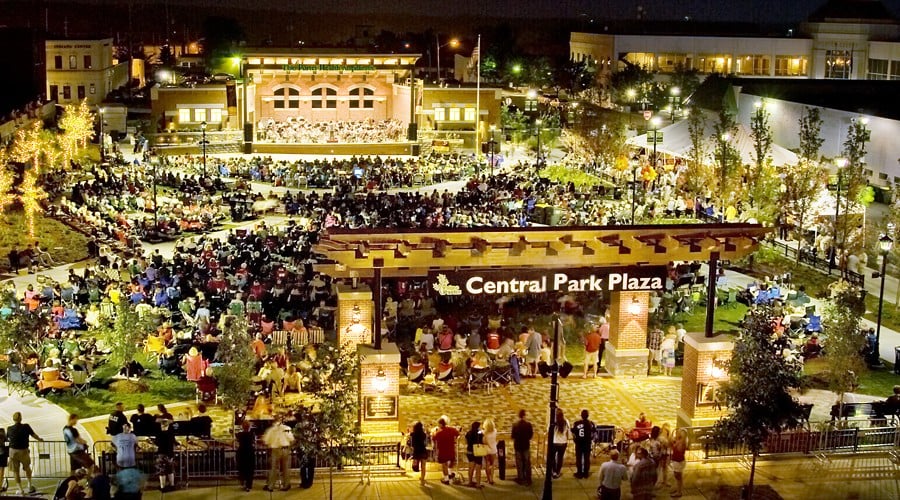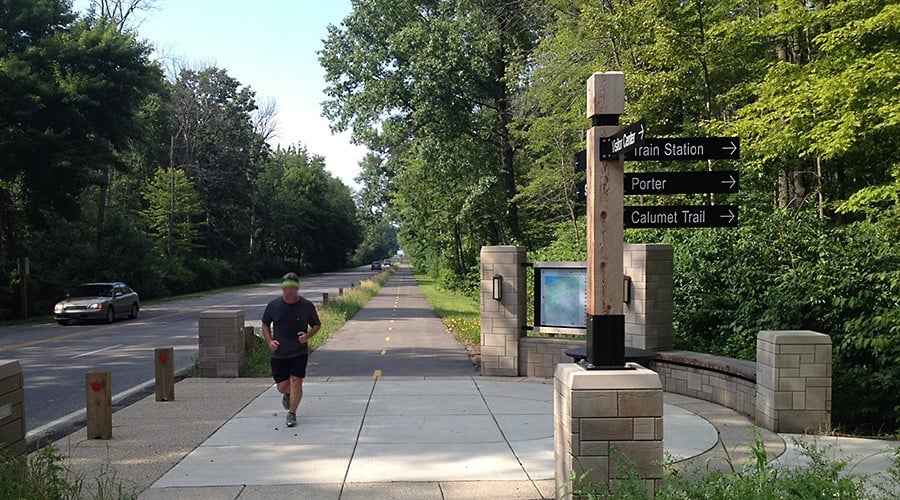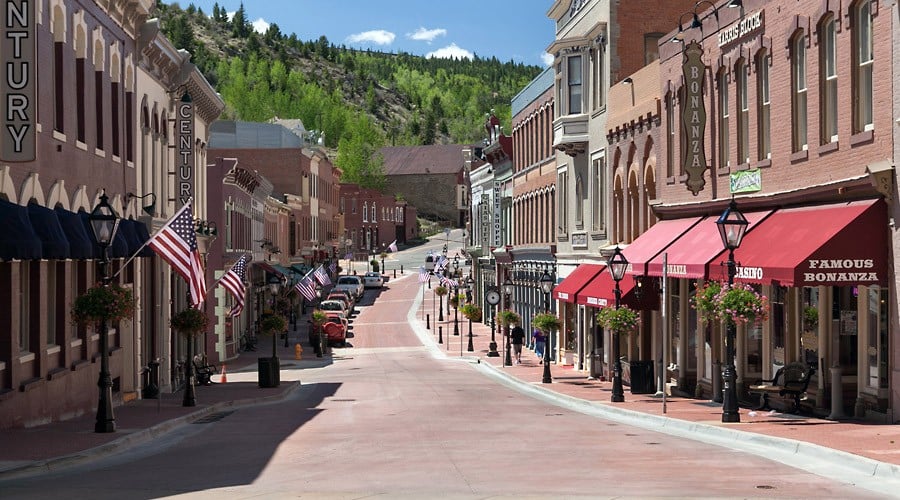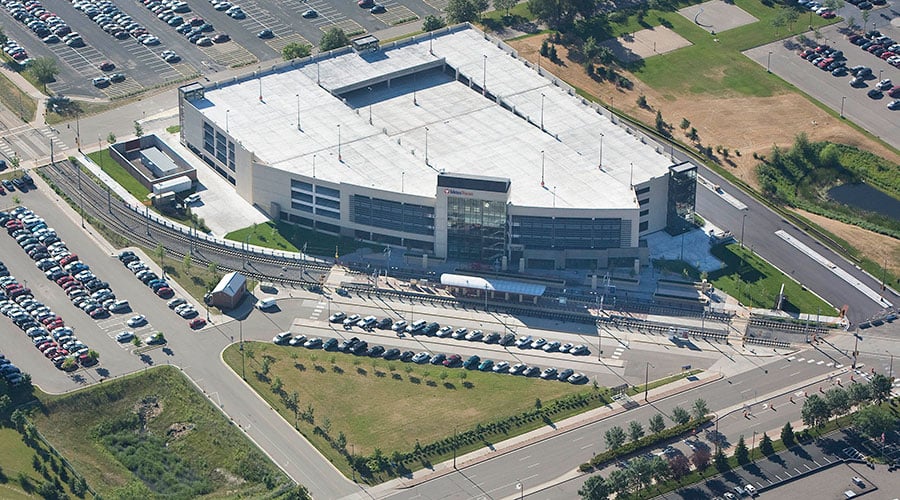Economic development is a deep, constantly shifting topic affected by technological, political, sociological, economic, and generational trends.
For busy decision-makers, staying in the know can be difficult. Here, planning and economic development leader Laurie Miller shares notable concepts, new and traditional, that impact the world of economic development and your efforts in these areas.
1. Return of the city, growth of metro areas
After decades in the suburbs, populations are returning to cities and large metro regions. This migration has made city and metro areas more attractive to businesses wanting a generationally diverse workforce. As a result, regional dynamics are changing significantly.
"The new economic development model isn't just about individual towns or cities; it's about improving the quality of life and the welfare of everyone," says Laurie. This shift emphasizes the need for urban and rural areas to adapt to new economic realities.
Smaller outstate communities in rural or less densely populated areas need to invest in modern technology to compete with urban regions. "Outstate communities are now positioned to invest in technology," says Laurie. "High-speed internet, smart infrastructure, and innovations like digital connectivity can enhance quality of life. Amenities such as trails, parks, and outdoor spaces, which were once exclusive to metro areas, are now improved by smart tech solutions, making these communities more competitive and attractive for both residents and businesses."

Central Park Plaza in Valparaiso, Indiana, is a shining example of how an informal venue can strengthen a downtown. It includes a park with an amphitheater, ice rink, and catering facility. The park averages more than 100,000 yearly visitors.
2. The expanding definition of “downtown”
The downtown area has long been considered an engine of commerce, the heart and pulse of a community, and a place businesses locate to drive prosperity. However, the competitive advantage of downtown is changing. It is becoming increasingly important to consider downtowns as central social districts rather than just central business districts. A thriving downtown is where people conduct business and choose to live, gather, and celebrate with loved ones.
The resurgence of downtown as the new central social district is more about the placemaking movement than actual development. This involves integrating attractive public spaces where people want to be, creating an environment that benefits businesses through the concentration of individuals. Much of this movement is grounded in participatory, community-driven processes to reclaim public space and transform disused urban areas into lively, inclusive, and safe places.
3. Parks and trails measured for prosperity
According to the American Planning Association, well-designed parks and trails boost property values and increase municipal revenues. They also attract knowledge workers, affluent retirees, and homebuyers. That's why it's rare to find a project today that doesn't have an economic development metric – even public realm investments like parks and trails.
"In today's economic development approach, proximity and access to parks, open spaces, and recreational opportunities play as much a role in a community's success as schools, employment centers, and housing stock," says Laurie. "Capitalization of these spaces positively impacts property values across the board in a community, raising not only the market values of the individual property but the intrinsic value of an entire community, a tertiary amenity to homeowners and business alike."
It is not always true that development lowers taxes, though; it may be the primary reason taxes increase as more and more services are required. This is why a cost of community service (COCS) analysis is beneficial to identifying tax cost-generators and determining an equitable economic diversification strategy to reduce the potential long-term negative impacts of development (new schools, fire and police facilities and operations, etc.). Open space does not demand the same level of services that a residential neighborhood or commercial development may require, meaning fewer municipal expenses.
It is a realization that a strategy of developing or conserving parks and open space is not contrary to a community's health but rather an integral part of it. This is the basis of what's called the proximate principle.
Adds Laurie, “In fact, economic development is one of the primary evaluation criteria for many funding entities in the country.

Dunes Kankakee Trail, Porter County, Indiana
On the Dunes Kankakee Trail in Porter County, Indiana (above), economic sustainability was viewed on par with social and environmental considerations. During the trail routing evaluation, the SEH planning and landscape architecture team incorporated economic development considerations into the design. The trail alignments that connect business districts, potential new development areas, and tourism destinations received a higher priority for completion.
4. How sustainable streets serve the economy
Planning pundits have long believed well-designed streets were good for business. A report by the New York City Department of Transportation helps solidify this stance, proving that well-designed, sustainable streets do more than increase safety and reduce environmental impact.
“Better streets attract more people and more activity, thus strengthening both communities, the businesses that serve them, and the city’s economy as a whole,” writes New York City Department of Transportation Commissioner Janette Sadik-Khan in the report.
In one case study, retail sales for businesses along a sustainable new street – with traffic calming, tree plantings, and improved bike and pedestrian facilities – outperformed two comparable streets by nearly 25%.

Main Street, Central City, Colorado
In Central City, Colorado (above), downtown infrastructure had deteriorated to the point of impacting businesses. SEH collaborated with residents and businesses to rebuild main street with a more pedestrian- and business-friendly, sustainable street design.
5. Having a “skills snapshot” of your workforce
The concept of economic development is grounded in job creation and retention. But remember, those jobs still need people, and those people need the right skills for the job.
“What is the composition and availability of your existing workforce?” asks Laurie. “Be sure to understand the skills and availability of workers in your region. With that knowledge, your efforts will be more fruitful.”
While workforce development strategies vary by location and sector, success will depend on having a good, realistic snapshot of the skills of your workforce and its capabilities. Mike says a good pre-assessment of your workforce will help determine whether a sector- or place-based approach to workforce development is best for your region.
6. The unlikely role of parking management
Parking facilities use land. When that land is tied up to hold cars rather than businesses, there is a potentially lost opportunity, especially in higher-density urban areas.
Recent findings show that context-appropriate parking management programs can yield surprising results in reducing congestion and improving downtown vibrancy. It’s a matter of managing the land so parking facilities don’t replace opportunities that might instead contribute to the economy. .

28th Avenue Park and Ride, Bloomington, Minnesota
In the Minneapolis Metropolitan Area, park-and-ride facilities connected to vital transit programs, like the 28th Avenue Station shown above, help reduce the downtown parking footprint.
7. Economic gardening concepts becoming more prevalent
Headlines in the business section of major newspapers are filled with relocation announcements of multi-million-dollar companies relocating hundreds of jobs. Attracting this kind of company is difficult – there aren’t many of them, and the ones available are highly sought after by other regions or communities.
What happens when you stop looking for a single company with 100 jobs and, instead, identify and assist five smaller companies already in your region able to grow 20 jobs each? That’s the underlying principle behind economic gardening, a concept initiated in 1987 in Littleton, Colorado.
Since then, it’s grown throughout the country.
Is economic gardening right for your community? Learn more at the International City/County Management Association website.
8. The emergence of niche development firms
Certain economic development programs require a high degree of specialization to capitalize, including:
- Historic tax credits
- Tax credit housing projects
- New market tax credits
Economic development as a service industry is evolving from planning to financing. This niche helps private and public entities understand the financial impacts of economic development and develop financial incentive strategies to negotiate, bargain, and compromise for the best deals. By applying the Pareto Principle (80/20 Rule or Rule of Sparsity), this approach aims to achieve economic development success, efficiency, and the marginal gains necessary for short-term to long-term improvements in a community's quality of life. However, this method requires significant time, cost, and expertise.
According to Laurie, the solution is less about finding the right program and more about picking the right partner.
"Clients should align with consultants who possess the expertise to effectively utilize these resources, all the while maintaining a commitment to the public good," Laurie advises.
9. The need for rigorous risk assessment
All projects are not equal. Municipalities must be disciplined, evaluating risk and partnering only in projects with reasonable returns on investment. Some communities, desperate for any projects, may make deals inadequately supported by private dollars, leading to insufficient paybacks that do not justify the level of public participation. A project can do more harm than good in the long run without adequate assessment.
This can result in distressed Tax Incremental Districts (TIDs) that have their already-long lives extended and require donor districts to prop up non-performing ones. Such outcomes erode public confidence in devices like Tax Increment Financing (TIF) when citizens feel let down by performance that doesn't measure up to initial promises. To determine if a project will generate enough return on investment for public involvement, it's crucial to ask whether the project would occur in substantially the same way without any public funding. If the answer is yes, public funds spent on it may be wasted, regardless of policymakers' and development staff's desire for a photo-op.
In an ideal scenario, there are complex numbers and data to support investment decisions. However, sometimes these aren't appropriate. It's essential to do the math to ensure payback periods are reasonable and public financing is paid back to the necessary amount. Yet, some goals can't be reduced to accounting tests. In those cases, a community must work from a vision encompassing overarching goals.
"Ask yourself, would the project occur in substantially the same way without any public funding? If the answer is yes, then public funds spent on it may be wasted, no matter how much policymakers and development staff members may want the photo-op," says Laurie.
In an ideal world, hard numbers and data would always support our investment decisions. But sometimes, that's not the case. It's crucial to do the math to ensure payback periods are reasonable and public financing is pared back to the necessary amount. However, some goals can't be reduced to accounting tests. In those cases, a community is wise to work from a vision encompassing overarching goals. This balanced approach ensures that investments are both financially sound and aligned with the broader vision for community development.
Conclusion
When it comes to economic development, no single strategy works in every scenario. But there is much we can do to improve the systems and structures supporting jobs and the economy. We can create destinations where people want to live, work, and socialize. Attract people with well-designed parks, trails, and streets. Keep a close eye on our workforce. Manage the land wisely. Cultivate small businesses. Be disciplined about our investments. Finally, we can collaborate with consultants who understand how to leverage opportunities and resources while working for the public good.
About the Expert

Laurie Miller is a community development specialist with extensive municipal planning experience in various domains. She has a passion for redevelopment and recreational planning, enjoying great success in seeking funding and developing a collective vision for projects that create vibrant and inclusive spaces for communities to live and come together.

.png?width=113&name=SEH_Logo_RGB%20(1).png)
